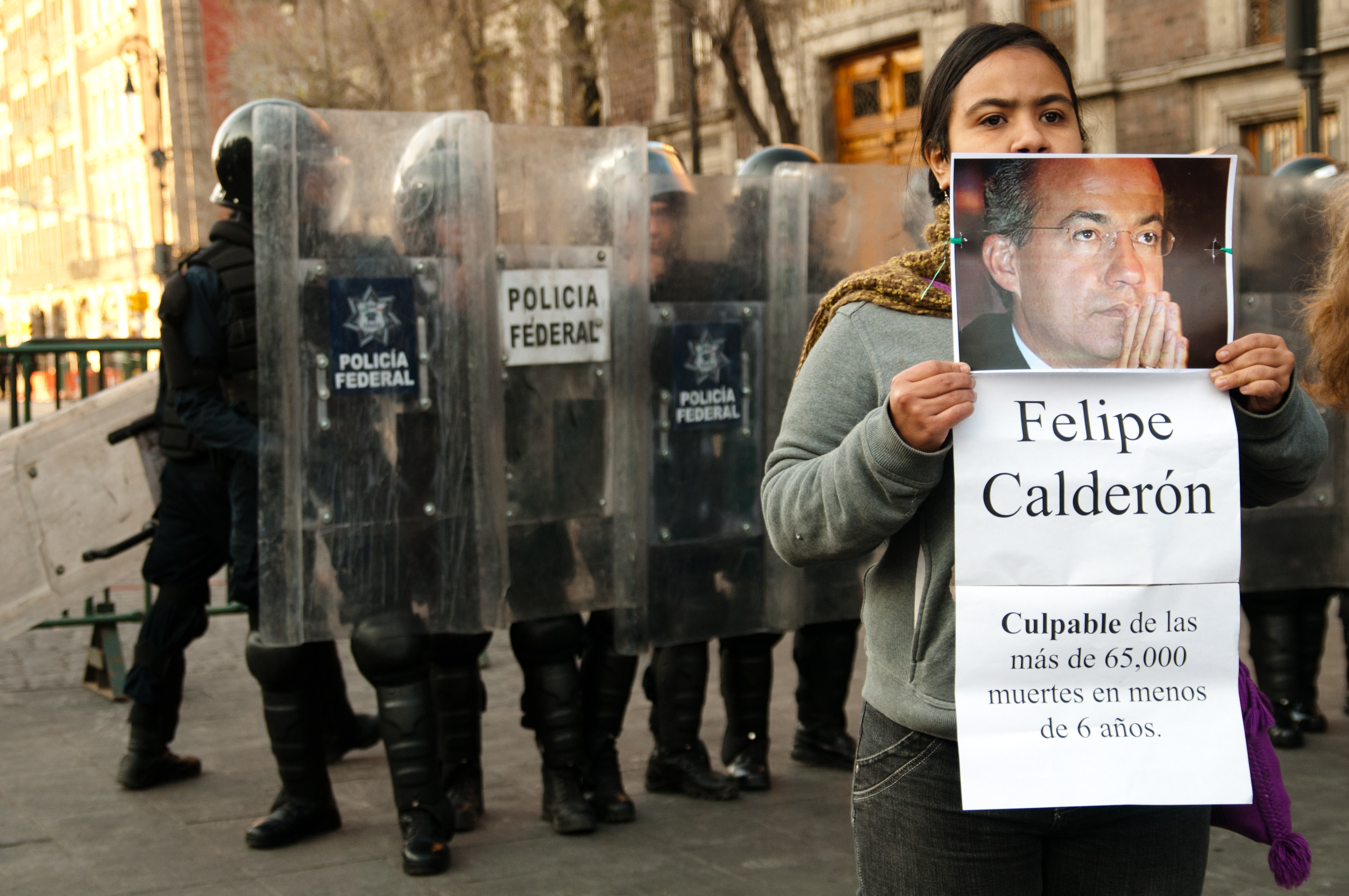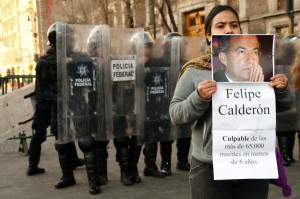The Drug War: A Series of Interconnected Failures
 Photo courtesy of Eneas De Troya via Flickr Creative Commons
Photo courtesy of Eneas De Troya via Flickr Creative Commons

Dating back to the Cold War era, US national security objectives have played a strong part in deciding US state action in Latin American countries – a dynamic that was shifted instead of turned around as the threat of communism waned and the menace of the transnational drug trade took its place. By the time we get to the 21st century, the Mexican and Colombian cases certainly illustrate the profound and varied failures of the American-led War on Drugs which reach from complicating armed struggle to hindering the state’s ability to function as a unitary actor to demoralizing civil society. These drug prohibition policies came linked with efforts to open Latin American markets to foreign investment and extraction of resources. Depending on how we measure the ‘success’ of the War on Drug policies, we can come to very different conclusions. If our measurements look at Latin American state reliance on validation from Washington or at dollars invested per acre of mineral-rich land, then the results are uplifting. However, if we are looking for a reduction of the human suffering caused by the drug trade, we are met with resounding failure.
The end of the Cold War in the early 1990s brought the War on Drugs to the forefront of American policy toward Latin America. The case of Colombia shows the ways in which Cold War dynamics did not disappear when the USSR fell apart, but rather became tangled up in the United States’ new national security goals. In this case, the drug war has exacerbated existing armed struggle, namely between the state and the Revolutionary Armed Forces of Colombia, the FARC. The FARC has been active since 1964, but experienced a resurgence where, by the end of the 1990s, the size of its army had nearly doubled to between 15,000 and 20,000 soldiers and its territory expanded to cover nearly half of the country.[1] Peceny and Durnan point out that this revitalization “appears as a stark anomaly in the region, considering how the spread of liberal democracy and withdrawal of international assistance to formerly Cold War-era guerrilla groups had shattered the ideological and financial base that has traditionally fuelled revolutionary upheavals.”[2]
So how is the FARC still such a powerful force opposing the Colombian state? The answer lies in the changing political economy of the cocaine trade as a function of American drug eradication efforts. In the early 1990s, the US successfully eradicated and outlawed coca production and trafficking in Bolivia and Peru. This is significant for Colombia and the FARC because the crackdown in the southern Andes encouraged coca farming and cocaine production in Colombia in a process outlined by the balloon effect — which outlines how eradication in most cases only displaces the drug trade and redraws trafficking routes into new countries.[3]
Once the bulk of what were Bolivia and Peru’s cocaine industries had moved north into Colombia, the FARC began to capitalize on the influx of drug revenue through taxation and demanding protection money from coca farmers in the areas it controlled. Removing the blinders which lead American officials to call the eradication in the Bolivia and Peru a success, allows us to see how the consequences of Peruvian and Bolivian coca eradication reverberate through Colombia. By combining these revenues with money made from kidnappings and other illicit activities, the FARC was able to make up to 500 million US dollars annually and increase the percentage of Colombian municipalities reporting guerilla operations from 17.3 percent to 59.8 percent.[4] The US Department of State labels the FARC a “narcoguerilla movement whose success can be explained simply as a consequence of its increased participation in the drug trade,” ignoring the impacts of the US government’s own counter-narcotic policies in bolstering the position of the revolutionary group whose continued war against the Colombian state has claimed upwards of 200,000 lives and led Peceny and Durnan to call the United States “the FARC’s best friend” as the group continues to subvert the power of the state.[5]
From this point, the Colombian case illustrates several important themes to the study of how drug war policies have impacted Latin America: foreign powers undermining the cohesion of states deemed corrupt for forming these public-private relationships and these same foreign powers’ private sectors benefitting from the intervention deemed necessary by their own rhetoric. All the while, the true losers are the workers and the integrity of civil society.
The Mexican War on Drugs, launched by President Felipe Calderón in 2006, has threatened the livelihood and safety of more Mexicans and therefore drawn an ever larger swath of society into the struggle. In Mexico, drug cartels have posed a larger threat to the state than any guerrilla movement ever did.[6] Since 2006, an estimated 100,000 people have been killed or disappeared and “the government’s pursuit of the same strategy that ultimately brought its Cold War to an end – internal targeting and militarization – has only made matters worse and escalated the level of violence.”[7] By applying the same tactics to combat drug trafficking as it did to political dissidents, the US and Mexican governments have built a cycle of escalating violence which destabilizes the very fabric of society.
In Cuidad Juárez, a city famous for its devastation due to drug violence, the main newspaper addressed drug cartels in a 2010 editorial asking for direction so it can avoid the murder of reporters that the state is unable to stop.[8] In practice, the people living in these de-facto war zones become convinced of the power of the cartels while at the same time stripped of their faith in police and military forces’ and in politicians’ abilities to protect them. This ultimate delegitimization of the state is not a problem that the arrest of cartel leaders or the eradication of coca crops can fix: it was caused by outdated approaches to carrying out American national security objectives.
[1 ]Peceny, M.; Durnan, M. (2006). “The FARC’s Best Friend: U.S. Antidrug Policies and the Deepening of Colombia’s Civil War in the 1990s.” Latin American Politics and Society 48(2): 95-116.
[2] ibid.
[3] ibid.
[4] Campbell, H. (2014). “Narco-Propaganda in the Mexican “Drug War:” An Anthropological Perspective.” Latin American Perspectives 41(195): 60-77.
[5] Paley, D. (2015). “Drug War as Neoliberal Trojan Horse.” Latin American Perspectives 42(5): 109-132.
[6] Keller, R. (2016) From One Disaster to Another? Mexico’s Cold War and the War on Drugs. 6. The North American Congress on Latin America.
[7] ibid.
[8] Campbell 2014
